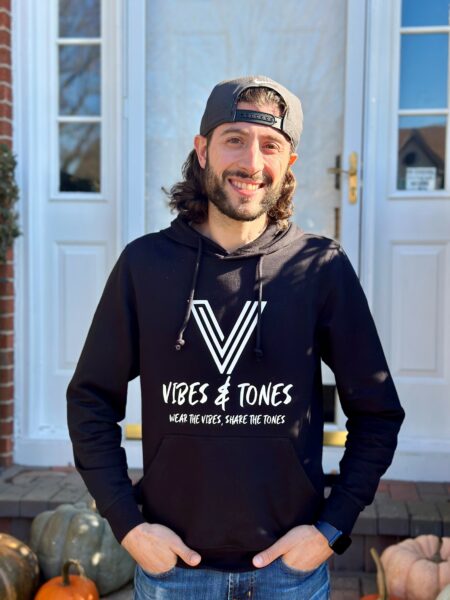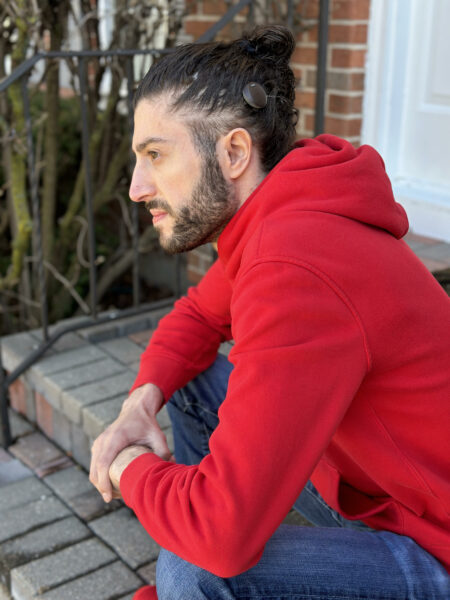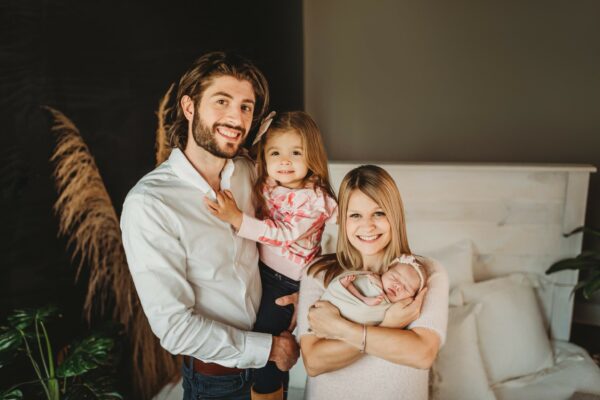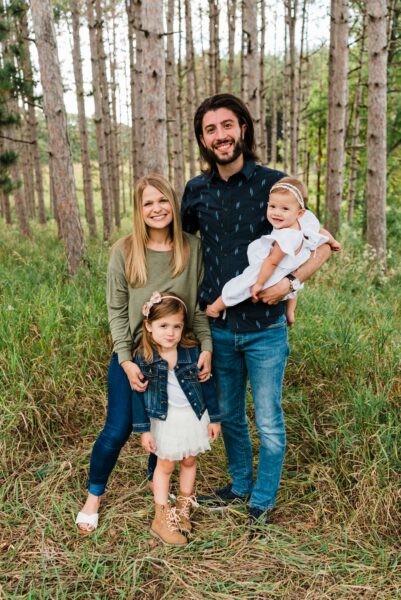“I invite you to join me on a journey that could very well change your life for the better, where silence becomes a source of strength and the joy of hearing is rediscovered. In the following seven steps, we'll explore the challenges, moments of clarity, and triumphs that shaped a life once filled with silence. This is a story of resilience, a testament to the human spirit and an invitation to join a community that celebrates the magic of sound and the power of shared experiences. Welcome to Reawakening to Sound: 7 Pivotal Moments with the Cochlear™ Osia® Sound Processor:
 Step 1: Diagnosis and the Battle with a Cholesteatoma
Step 1: Diagnosis and the Battle with a Cholesteatoma
My journey into the world of hearing loss began when I was just a 5-year-old kid. Imagine the shock of being diagnosed with something called cholesteatoma—an unfamiliar word that forever changed my life. It wasn’t an everyday health issue; it was a relentless intruder, like an uninvited guest overstaying its welcome at a party.
As years passed, my struggle with my cholesteatoma became a defining part of my life. I became familiar with hospital walls, surgeries and the frustration of doctors trying to remove this unwanted guest from my ear canal. It felt like a never-ending battle, a tough challenge that took a toll on my spirit.
But the turning point came in the fourth grade when doctors made a tough decision. They chose a major procedure to remove the cholesteatoma once and for all, but it left me with silence in my left ear. Silence became my constant companion and living in that silence was a choice I hadn’t expected.
Step 2: Living in Silence
Now, picture this: life without the everyday sounds we often take for granted, like the laughter and chatter of a family dinner or the hum of city life outside your window. That’s what I experienced when I chose to live a different kind of life—being in silence. It wasn’t an easy choice; it was a heartfelt decision influenced by fear, insecurity and the weight of judgment.
Back then, hearing aids were far from sleek and discreet. They were bulky, perched on your ear like a noticeable flag showing your struggle. So, what did I do? I adapted to a world without hearing in my left ear. I sacrificed phone conversations, slept through noisy moments and became an expert at nodding and smiling, even when I couldn’t hear what was said.
It felt like giving up, stepping into a world where half the sounds were turned down. I was living proof that silence could be overwhelming and that choice, though it made sense at the time, would shape my life for years to come.
 Step 3: The Loneliness of Silence
Step 3: The Loneliness of Silence
As the years passed, the silence around me grew louder. Conversations turned into challenges, especially in busy locations. I became skilled at using gestures to communicate in conversations, sparing others the inconvenience of repeating themselves.
This isolation didn’t just affect my hearing; it started eroding my social life and inner peace. I was caught in the whirlwind of social anxiety, where every interaction felt like an ordeal. Meeting new people was as daunting as addressing a crowd of strangers. Something had to change.
The turning point came with significant life events—a devastating loss when my father passed away, and the worldwide disruption caused by the COVID-19 pandemic. My social anxiety reached its peak, threatening to consume me entirely.
Step 4: Seeking Help and Therapy
In search of answers, I turned to a therapist. In those sessions, I had a powerful moment of understanding that deeply moved and motivated me. My social anxiety wasn’t just something lurking in the background; it was rooted in untreated deafness I had learned to hide. My therapist didn’t stop with those revelations; she led me toward a complete healing journey, inspiring hope and recovery.
It was time to rewrite my story and she encouraged me to explore options for improving my hearing. This was a turning point, a significant decision that would change my life’s course. So, I took a leap of faith and sought advice from an ear, nose, and throat specialist (ENT).
 Step 5: Exploring Hearing Solutions
Step 5: Exploring Hearing Solutions
The choices before me were like doors to a different world. Due to my surgeries, in-ear hearing aids weren’t an option. Instead, I had to choose between two alternatives, each with its own implications.
On one hand, I could follow the traditional path and get an over-ear hearing aid. While effective in improving my hearing, this choice had a downside—it remained noticeable, a constant reminder of my hearing challenges.
On the other hand, there was the Osia Sound Processor—an innovative device that had the potential to change my story. Unlike traditional hearing aids, it offered a discreet and advanced solution. This unique device had the potential not only to enhance my hearing but also to seamlessly integrate into my daily life, without drawing unnecessary attention to my condition.
It was an exciting prospect that could restore not just my hearing but also my confidence.
Step 6: Rediscovering Sound with the Osia Sound Processor
Choosing the Osia Sound Processor was a life-altering decision, a significant moment that marked the beginning of a transformation. Unlike the clunky hearing aids of the past, it was sleek, discreet and concealed.
With the Osia Sound Processor, sound re-entered my life like a long-lost friend. The rustling leaves, the city’s hum and friends’ laughter—all returned to bring vibrancy back to my world. But what truly made this experience special was hearing the everyday sounds in my own home.
Hearing my 4-year-old daughter’s laughter as she shared her day’s adventures, or my 1-year-old daughter’s sweet babbling as she explored the world—it was like savoring the most heartwarming sounds of everyday life. These were the moments that brought tears to my eyes, the moments I had longed for and could now cherish, thanks to the Osia Sound Processor.
 Step 7: The Impact of Innovative Features
Step 7: The Impact of Innovative Features
The Osia Sound Processor provided more than just the happiness of regaining the sounds of life. Its innovative features allowed me to customize my hearing experience. The direct streaming1 feature, in particular, was a game-changer. It not only connected seamlessly to my devices, letting me enjoy music and phone calls wirelessly, but it also allowed me to turn off the closed captioning on the TV, which my wife found distracting.
Moreover, the accompanying Osia Smart App2 gave me the power to adapt my Osia Sound Processor to different environments. Whether I was in a noisy restaurant, a peaceful park, or a bustling city street, I could easily adjust the settings to optimize my hearing experience. This remarkable technology wasn’t just about hearing; it was about regaining control and actively participating in the world around me. It was about making sure I didn’t miss any of life’s precious moments.
Conclusion: Embracing the Journey Ahead
So, here we are, at the end of my journey, or perhaps, at the beginning of something even greater. My story isn’t one of defeat; it’s a tale of resilience, a testament to the human spirit. And this journey is far from over.
Today, I want to invite you to join me on a new adventure. It’s a journey forward, filled with laughter and shared experiences. Along the way, I stumbled upon Vibes and Tones—a community that believes in hearing the laughter and sharing the stories. Vibes and Tones isn’t just a catchy slogan; it’s a way of life. We’re all about experiencing life to the fullest, sharing stories, and finding your voice. So, join us in this incredible journey, because as we say in our community:
“Hear the Laughter, Share the Stories, Join the Community.”
Thank you for being a part of my story. May we all find the courage to embrace change, conquer challenges and celebrate the wonder of sound in our lives.”
The Osia Sound Processor may be a solution for individuals experiencing hearing loss. Learn about this slim, discreet and comfortable device here!
3- For a full list of smartphone and app compatible devices, visit: www.cochlear.com/compatibility.
- Osia Smart App is available on App Store and Google Play. For compatibility information, visit www.Cochlear.com/compatibility.
- In the US, the Osia system is cleared for children 12 years and older. In Canada, the Osia system is approved for children 5 years of age and older.